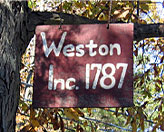

The Future Of AIDS Prevention in Connecticut
|
Prevention Plan for African American Community |
|
|
According to Ms. Brown, Ms. Luna, Ms. Ramierz, Mr. Vail, and Mr. Williams, authors of “Developing an Effective Intervention for IDU Women: A Harm Reduction Approach to Collaboration,” a “harm reduction approach acknowledges that people engage in unhealthy behaviors and seeks to reduce the harm that results from that behavior” (5). Like most prevention programs, group intervention meetings, such as those to be instituted in Bridgeport, are based on this “harm reduction approach” and on the assumption that, with the necessary education and instruction, a person can change his/her behavior. Indeed, it is this assumption that guided the facilitators of the WINGS intervention to implement a series of educational meeting sessions. According to the WINGS leaders, the intervention included 6 sessions: 1. Getting and Staying Healthy, 2. Straight Talk, 3. Sexually Transmitted Diseases and HIV, 4. Choosing Safer Sex, 5. Living Dangerously: Sex, Drugs, and HIV, 6. Relationships. These meetings covered such topics as women’s health, female anatomy, STDs, contraceptive options, drug use, and discussions of risky relationships (6). Although these topics certainly provide an excellent model for an intervention session program, they are geared toward women and, therefore, need to be altered before implementation in the city of Bridgeport, where they will target the African American population. Furthermore, an analysis of the WINGS program revealed a cost-effectiveness issue. Although the program was successful, it wasn’t as cost effective as it could have been, and research suggested the possibility that this problem could have been alleviated with fewer sessions focusing more on contraception and condom use. For these reason, the program instituted in Connecticut should be broken up into three distinct meetings, the first of which will cover the identification of African American health concerns and community resources for health. The second meeting will be slightly different. Unlike the first session, which will include African Americans of both genders, the second session will split the attendees into two groups: men and women. Once separated, the different groups will discuss disease information, contraceptive choices, risk reduction, and risky relationships. Although it would be possible to discuss these topics as one large group, the controversy regarding condom use and other sensitive issues suggests the need to separate the attending population based on gender. Finally the third session will educate the attendees on drug use and abuse, treatment resources, harm reduction, condoms, and the NEP van. All three session will be between 90 and 120 minutes long, as suggested by “Cost-Effectiveness of a Community-Level HIV Risk Reduction Intervention” (16) and will be held in the Golden Hill Methodist Church, on 210 Elm St. in Bridgeport on Wednesday nights.
|
|
|
Emergency Department at Norwalk Hospital (29)
|
The decision to hold the meetings in the Golden Hill Methodist Church was based on a variety of reasons. First, the church is already the location of regular Narcotics Anonymous meetings, suggesting its willingness to contribute to HIV/AIDS prevention. Secondly, and perhaps more importantly, the church is often an important feature in the African American community. As the authors of “HIV/AIDS and the Black Church: What Are the Barriers to Prevention Services?” write, “The Church has long served as a vital institution within the black community, setting defining values and norms for community members. The Church has also been a site of social activism and health education within the black community. Leaders of churches are often viewed by community members as reliable sources of information and support” (20). An association between the church and AIDS prevention might, therefore, increase the likelihood of continued attendance on the part of the African American community. Although the location of the meetings would certainly help in guaranteeing a certain number of participants, active recruitment of attendees would remain a necessity. For that reason the 4 staff members (two facilitators [one male and one female], one assistant, and a babysitter) would begin advertising prior to implementation of the program. Like the advertising for the NEP van, staff members would post notices in the emergency and waiting rooms of Norwalk Hospital and Bridgeport Hospital, in NA meeting places and drug rehab clinics, in churches, in schools, and in cultural centers, such as the Black Rock Art Center. At these locations the staff members would often post flyers which would advertise the existence of such incentives as transportation compensation, $20 gift certificates to the local grocery store, free child care, and free meals.
|